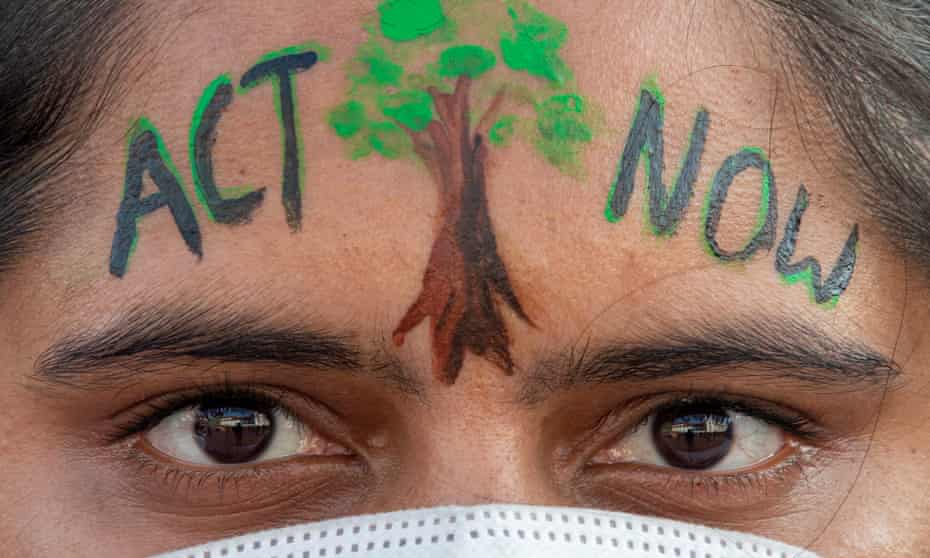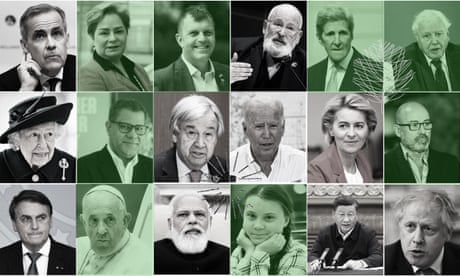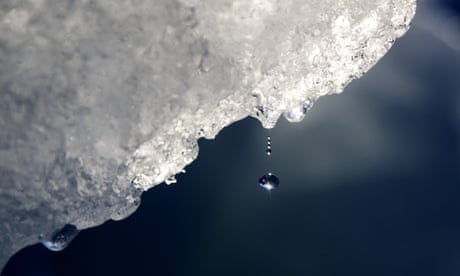The main purpose of this ongoing blog will be to track planetary extreme or record temperatures related to climate change. Any reports I see of ETs will be listed below the main topic of the day. I’ll refer to extreme or record temperatures as ETs (not extraterrestrials).😉
Main Topic: Is Cautious Optimism Warranted Coming Out of COP26?
Dear Diary. Crucial talks in Glasgow Scotland from COP26 will be winding down this weekend with i’s being dotted and t’s being crossed among countries attempting to reign in carbon pollution. Most, if not all, experts think that agreements coming out of COP26 won’t be sufficient to keep the globe below +1.5°C above preindustrial conditions in order to keep our climate stable enough for civilization to continue as it currently exists. Yet, some progress was made for future COPs to improve.
We can’t keep kicking our proverbial can down the road too much longer, though, having been told that significant changes need to occur before 2030. So, should we be optimistic or pessimistic about the climate situation coming out of COP26? I would say we need to be extremely nervous, being pressed to call for more action while acknowledging that politicians are at least trying to circumvent disasters stemming from the worst existential problem of our time. Action these days needs to be more than talk or agreements written on a printed page with significant real world changes taking place.
Today let’s look at both pessimistic and optimistic trains of thought coming out of COP26. First the negative:
Cop26 targets too weak to stop disaster, say Paris agreement architects
Figueres, Tubiana and Fabius warn that leaders must improve plans next year if world is to stay within crucial 1.5C limit

A Nepalese climate change protest in Kathmandu, Nepal this week. It will be too late to increase ambitions in 2025, Christina Figueres argues. Photograph: Narendra Shrestha/EPA
World leaders will have to return to the negotiating table next year with improved plans to cut greenhouse gases because the proposed targets agreed at the Cop26 summit are too weak to prevent disastrous levels of global heating, the three architects of the Paris agreement have warned.
Christiana Figueres, the former UN climate chief who oversaw the 2015 Paris summit, and Laurence Tubiana, the French diplomat who crafted the agreement, have told the Guardian the deadline is essential if the world is to avoid exceeding its 1.5C temperature limit. Laurent Fabius, the former French foreign minister who also oversaw Paris, added: “In the present circumstances [targets] must be enhanced next year.”
The last-ditch intervention by such senior figures, with the Glasgow talks reaching their final hours, reveals the heightened alarm among many experts over the chasm between carbon targets and the deep cuts necessary to limit temperature rises to 1.5C above pre-industrial levels.
Current national plans – known as nationally determined contributions (NDCs) – would lead to 2.4C of heating, according to an influential analysis this week by Climate Action Tracker.
Countries are currently expected to return with better pledges in 2025, but many are now demanding the deadline should be brought forward. This is seen as the most closely fought area of disagreement as the UK hosts struggle to broker a deal.
“If that [five years] is the first time that countries are called to increase their ambitions, honestly that’s going to be too late,” said Figueres, founding partner of the Global Optimism thinktank.

“This is critically important. We need much more urgency, as this is the critical decade. We need to come back next year. We can’t wait five years for new NDCs.”
Figueres and Tubiana said forcing countries to return with improved targets next year was allowed under the legal provisions of the Paris agreement. The European Union and the UN secretary-general, António Guterres, have also intervened to support the proposal. Guterres told the conference last week: “Let’s have no illusions: if commitments fall short by the end of this Cop, countries must revisit their national climate plans and policies. Not every five years. Every year.”
Tubiana, now chief of the European Climate Foundation, said: “It’s really important that we come back next year, and in 2023. That must be central to any outcome in Glasgow. This is necessary to fulfil the Paris agreement.”
Since the Paris agreement was signed, binding countries to limit temperature rises “well below” 2C above pre-industrial levels while “pursuing efforts” to a 1.5C limit, new science has shown that breaching the 1.5C threshold would lead to disastrous impacts, some irreversible, including the inundation of many low-lying areas. Heating has now reached 1.1C, and extreme weather is already taking hold around the world.

The Intergovernmental Panel on Climate Change has said emissions must be cut by 45% by 2030 to stay within 1.5C.
Figueres said the strengthened science means the five-yearly revisions – often called a “ratchet” – set out in the Paris agreement should be hastened. “The Paris agreement was deliberately written to continue to improve its provisions according to the best available science,” she added.
Tubiana also stressed that the spirit of the Paris agreement was based on climate science. “We must base decisions on the science,” said Tubiana. “That’s why we have the ratchet mechanism in the Paris agreement. We must agree to come back next year, as this gap [between NDCs and scientific advice] is a really big problem.”
Many other senior participants, observers and countries in the talks have also told the Guardian they back the call by Figueres and Tubiana.
Mary Robinson, chair of the Elders Group of senior statespeople, and previously a UN climate envoy, UN commissioner for human rights and president of Ireland, said: “They have to come back next year, that is needed to fulfil the terms of the Paris agreement. We need much more urgency, we need pressure. How can we say we are aligned with 1.5C if we don’t agree to come back?”
The question of when and how to revise NDCs is crucial because although the Glasgow talks will continue at least to the end of Friday, and probably well into this weekend, there is now no possibility that governments will toughen their NDCs at this summit. But a clause in the draft text that will form the main outcome of the talks would allow for a return next year to update and strengthen the targets.
The US also wants countries to have to come forward with stronger plans on a more frequent basis, but balks at the idea that all parties should have to revise their whole NDCs annually, as they can be complex documents involving multiple commitments across many government departments.

Xie Zhenhua, China’s head of delegation, said: “Whether the NDCs should be updated annually depends on what content is in it. Stable and long-term NDCS are more helpful for countries to carry out action to achieve targets.”
Xie also indicated that a “global stocktake” – a mechanism under the Paris agreement for countries to assess their NDCs in 2023 – might be a moment for revisions.
There may be room for compromise with the world’s two biggest emitters, who signed a surprise cooperative pact on Wednesday committing them to work together on emissions cuts in the next decade, in a major boost for the Cop26 summit.
A new draft outcome text is set to be drawn up by delegates in the early hours of Friday morning, and discussed ahead of the 6pm deadline for the talks to finish. However, previous Cop conferences have tended to go on well into Saturday and sometimes Sunday.
Other sticking points yet to be resolved in the draft text include climate finance for poor countries to help them cut carbon and cope with the impacts of extreme weather, and ways to help them with “loss and damage” – the ravages of extreme weather so severe that they cannot be prepared for or adapted to.
There are also question marks over how countries should monitor and report on their emissions, and controversial provisions for countries to use carbon trading or offsetting to help meet their emissions-cutting targets.
——————————————————————
If there were ever a time to join us, it is now. Every contribution, however big or small, powers our journalism and sustains our future. Support the Guardian from as little as $1 – it only takes a minute. Thank you.

And here is a cautiously optimistic view on COP26 presented by Dr. Michael Mann:
(Just click the link below to find links to some very good podcasts. I’ve included the text from the current article on this post for my readers.)
These experts say there’s reason for cautious optimism coming out of COP26
Social Sharing
Michael Mann says the commitment to phase at coal and promises from the United States and China go a long way
CBC News · Posted: Nov 12, 2021 5:35 PM ET | Last Updated: November 12

Artists painted a mural on a a wall next to the Clydeside Expressway near Scottish Events Centre in Glasgow where COP26 is taking place. (Jeff J Mitchell/Getty Images)
As the COP26 summit ends, experts say there is reason to be “cautiously optimistic” about the work that’s been done to avoid a climate disaster.
“There’s reason now to have some optimism. When we look down the road, we can see still a path to keeping warming below 1.5 degrees Celsius,” Michael Mann, director of the Earth System Science Center at Pennsylvania State University, told Matt Galloway on The Current.
“But make no mistake, there is a lot of work left to be done.”
The conference set out with a core aim: to keep alive the 2015 Paris Agreement’s target to stop global warming at 1.5 C above preindustrial levels.
And Mann says progress has been made there. He said that early on at the summit, there was frustration from young advocates that there wasn’t much headway. But he says even though the final plan isn’t in place just yet, the summary statement that’s been put out is encouraging.

The statement focuses on phasing out coal and keeping warming below 1.5 degrees Celsius, and also emphasizes new commitments from the United States and China, which weren’t part of the Paris Agreement.
Kathryn Harrison, a political science professor at the University of British Columbia, says those commitments from the United States and China could make a big difference, because the countries are two of the world’s biggest emitters.
“They’re big actors. They carry a lot of weight and a lot of other countries look to them,” said Harrison.
But a new draft of the summary statement published on Friday morning weakened the language used in previous texts to address the phasing out of fossil fuels.
European Union climate policy chief Frans Timmermans had said removing that language “would be an extremely, extremely bad signal.”
Work ahead
Mann said that after the summit is over and everyone returns to their countries, he wants to see policymakers walk the walk, and he’ll be watching for what’s called the “implementation gap.”
“[That] is the difference between what politicians are pledging and what they’re actually doing, the policies that are in place right now,” said Mann.
Kathryn Harrison said the other big question is if China will follow through with its commitments, but she says the country usually only makes promises it feels it can keep.

However, she added, it’s a challenge because the United Nations can’t force countries to make good on promises.
“The UN is not a world government. They have to rely on countries’ voluntary commitments to do what they said they were going to do.”
But Mann is hopeful some of these countries will act, not because of the politicians, but because of the youth, who have been so vocal on climate change.
“It’s in the fact that they are out there marching 40,000 strong in the streets of Glasgow to recenter this conversation, where it needs to be, about our ethical obligation to act,” said Mann.
“We’ve seen some real movement, a lot of it because of the pressure that youth climate advocates have been putting on opinion leaders and policymakers.”
Written by Philip Drost. Produced by Niza Lyapa Nondo and Joana Draghici.
MORE FROM THIS EPISODE
Also read:
Here are some more COP26 articles and news:
Here are some “ET’s” reported from Friday and Saturday:
Here is more October 2021 climatology:
Here is more climate and weather news from Saturday:
(As usual, this will be a fluid post in which more information gets added during the day as it crosses my radar, crediting all who have put it on-line. Items will be archived on this site for posterity. In most instances click on the pictures of each tweet to see each article. The most noteworthy items will be listed first.)
Now here are some of today’s articles and notes on the horrid COVID-19 pandemic:
(If you like these posts and my work please contribute via the PayPal widget, which has recently been added to this site. Thanks in advance for any support.)
Guy Walton “The Climate Guy”